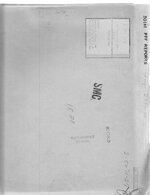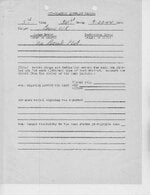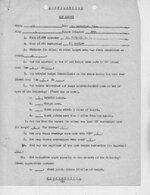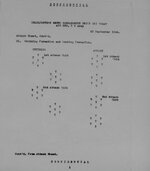Hi everybody.
I have a question regarding this report of Operational Analysis Section of 15th Air Force. I'm not sure it's the right place for this post.
As you can see, a formation of 4 Boxes of B-24 Liberators ( 3 boxes of 8 A/C and 1 of 7A/C ) , bombed the target using the typical " 6 aircraft front " formation of 15th AF. Box A, B were the 1st AU ( Attacking Unit ), Box C,D were the 2nd one. In this case we had 4 Bombardiers : the Group Leader in Box A and 3 Box Leaders ( in Boxes B,C and D ). Every Box Leader aimed and dropped. The remainders of the Box dropped on the first.
My doubt is related to point 5. of this analysis : Method of Sighting. Somebody sighted for both Range and Deflection ( namely the 2 Leaders of the Attacking Units, so A and C ), others only for Range ( again the 2 Leaders of the Attacking Units ?? and the single Box Leaders ). What does it mean? It's confusing.
First: if the 2 Leaders of the Attacking Units sighted for both Range and Deflection how could they sight for Range only at the same time?
Second: every Box Leader sighted for Range. But why didn't sight for Deflection too? Maybe they dropped on the AU Leader ? But, if so, why sight for Range ?
The same scheme is typical of every report of this type I read ( hundreds ).
Thank You for your opinions.
Fausto
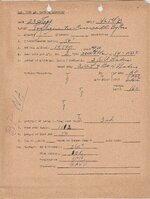
I have a question regarding this report of Operational Analysis Section of 15th Air Force. I'm not sure it's the right place for this post.
As you can see, a formation of 4 Boxes of B-24 Liberators ( 3 boxes of 8 A/C and 1 of 7A/C ) , bombed the target using the typical " 6 aircraft front " formation of 15th AF. Box A, B were the 1st AU ( Attacking Unit ), Box C,D were the 2nd one. In this case we had 4 Bombardiers : the Group Leader in Box A and 3 Box Leaders ( in Boxes B,C and D ). Every Box Leader aimed and dropped. The remainders of the Box dropped on the first.
My doubt is related to point 5. of this analysis : Method of Sighting. Somebody sighted for both Range and Deflection ( namely the 2 Leaders of the Attacking Units, so A and C ), others only for Range ( again the 2 Leaders of the Attacking Units ?? and the single Box Leaders ). What does it mean? It's confusing.
First: if the 2 Leaders of the Attacking Units sighted for both Range and Deflection how could they sight for Range only at the same time?
Second: every Box Leader sighted for Range. But why didn't sight for Deflection too? Maybe they dropped on the AU Leader ? But, if so, why sight for Range ?
The same scheme is typical of every report of this type I read ( hundreds ).
Thank You for your opinions.
Fausto


